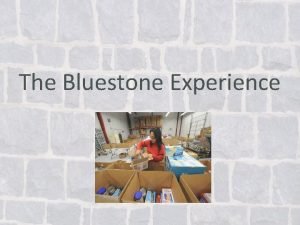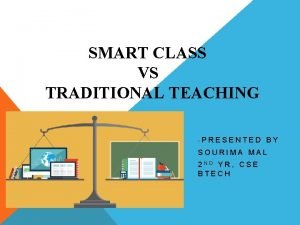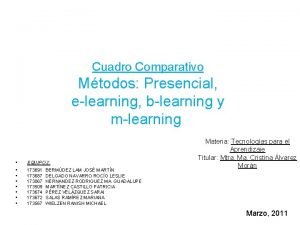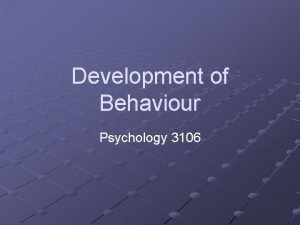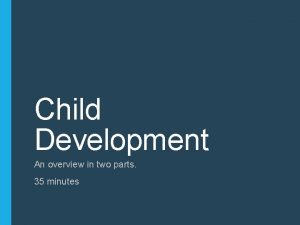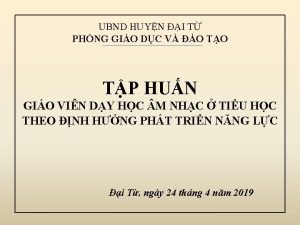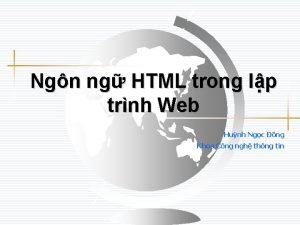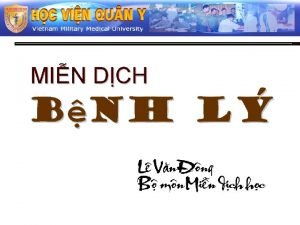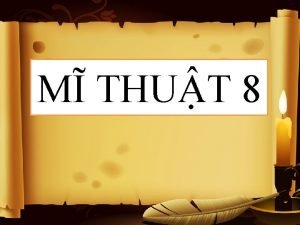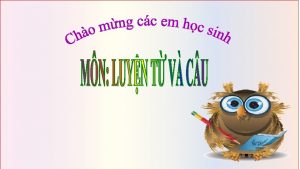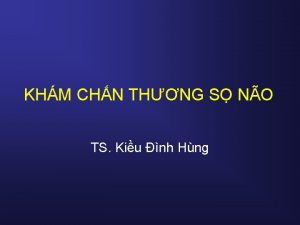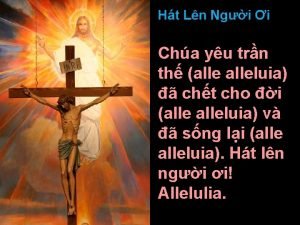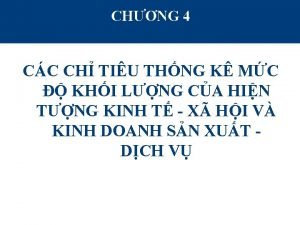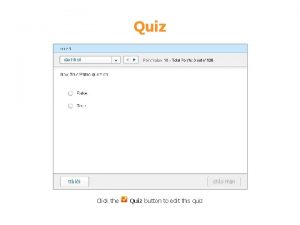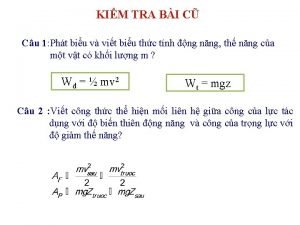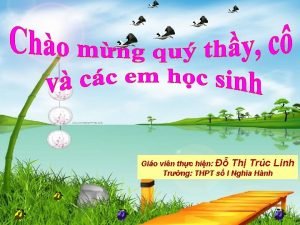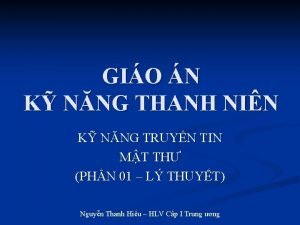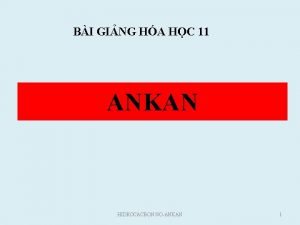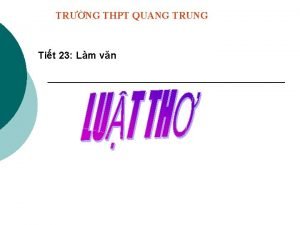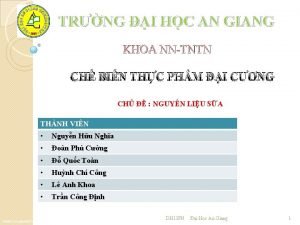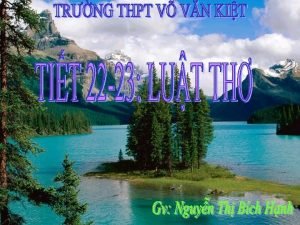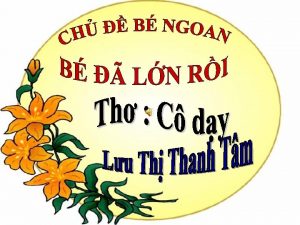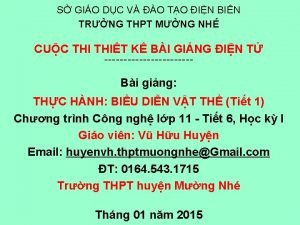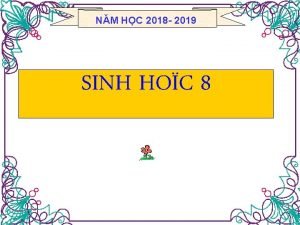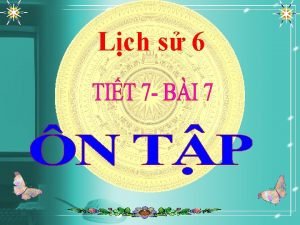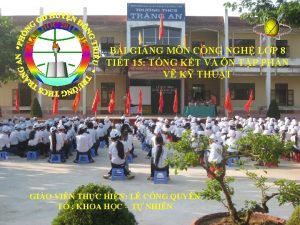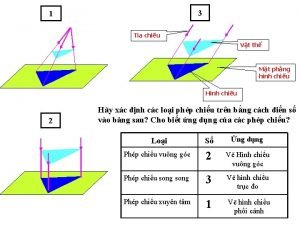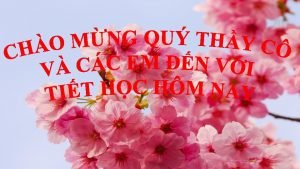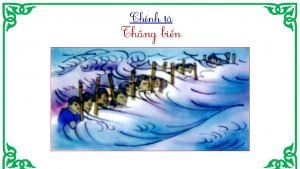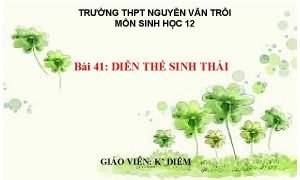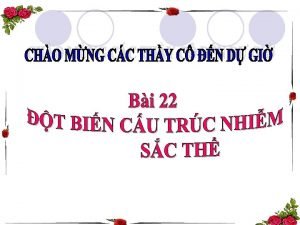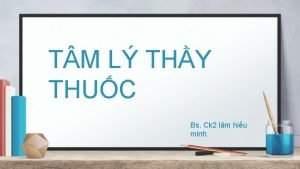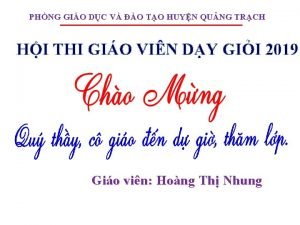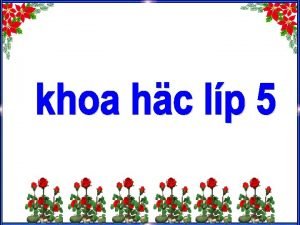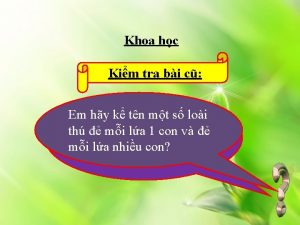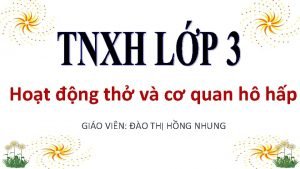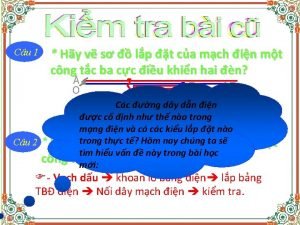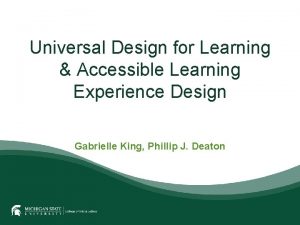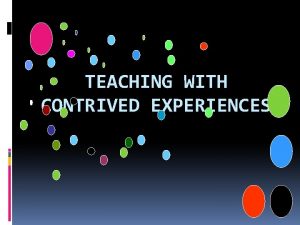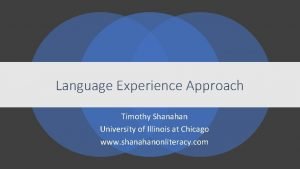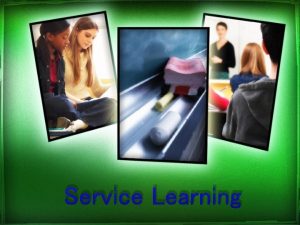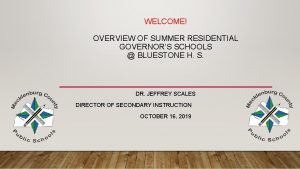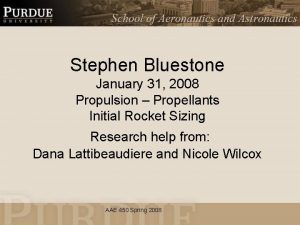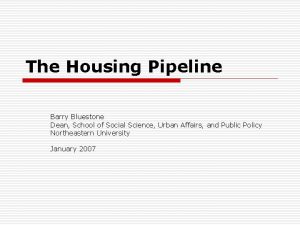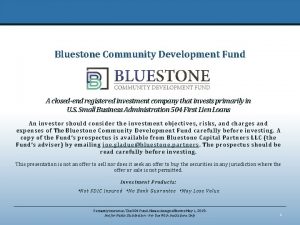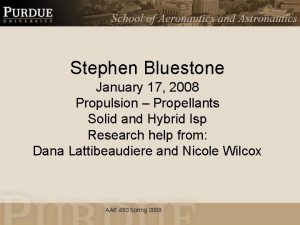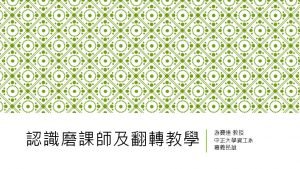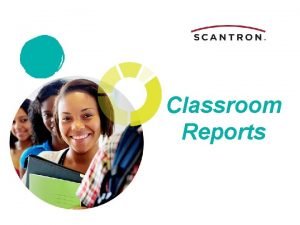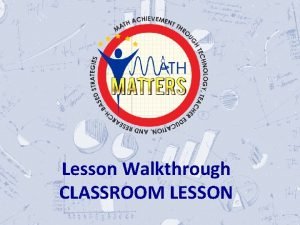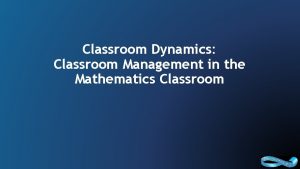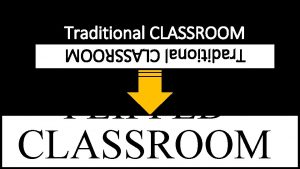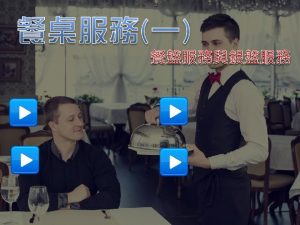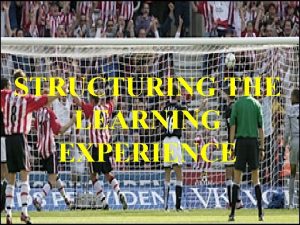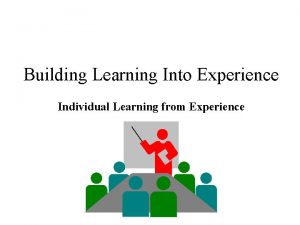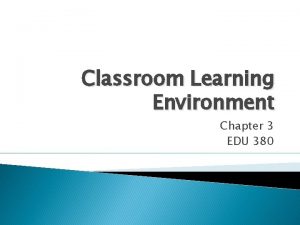The Bluestone Experience Bluestone Experience Classroom Service Learning

The Bluestone Experience

Bluestone Experience Classroom Service Learning Internships Field Study and Community Service Study Abroad Civic Engagement Sport and Clubs The Co-Curricular Record

Hook 1 • Abby to create a visual graphic with various degrees flying in –what’s the difference between them…. • Add co-curricular record • Morph into Camila • Camila’s video segment

The Co-curricular Record Elicited Visceral Responses from Across JMU • “Who is encouraging this project? … This project has been recommended and rejected for good reasons several times over the last twenty years. … I’d like to know who’s toes I’m most likely to step on. [Creating a co-curricular record is] impossible and should be avoided like the plague. ” • “In my 16 years of working with employers, I don’t ever recall having a conversation with an employer who wasn’t interested in a student’s co-curricular activity. ” • alumnus who worked in ORL and UREC – “it’s transformative” • “… to be the national model of the engaged university. To be engaged with ideas and engaged with the world. ” –JMU Strategic Plan

Comment from Hunter Rawlings III, AAU President, when asked about the value of co-curricular activities: “This sounds like a worthy project, but I am afraid I do not know enough about it to be of any help. I cannot add anything of value, because I am not very conversant with student co-curricular activities in general. ”

The Need for a Co-Curricular Record Vision: To be the national model for the engaged university: engaged with ideas and the world • JMU needs robust empirical basis upon which to claim it is becoming the national model of the engaged university • We would add: … and shows that JMU is becoming the national model of the engaged university Engaged Learning Civic Engagement Community Engagement

Need • JMU needs robust empirical basis upon which to claim it is becoming the national model of the engaged university • We would add: … and shows that James Madison University is becoming the national model of the engaged university

Need • Pockets of information exist across University – Career and Academic Planning; University Advising Clubs and; OIP Study Abroad; CSL; Residence Life • No central database/record to access all of a student’s co-curricular activities • No mechanism to document and foster a deeper learning of the co-curricular experience • JMU students cannot see the tangible results of their co-curricular efforts – Students’ assessment of whether their campus valued and promoted community engagement declined from first to senior year

Need • Employers interested in students’ co-curricular activities • No record for employers to review • Students co-curricular activities must align with career pursuits – E. g. , treasurer in a club, academic training in accounting, and a desire to work in a financial institution • Thru the Co-curricular record we can assist and advise students in this alignment

How Do We Capture All of These College Experiences?

Goals • The goals of the Bluestone Experience are as follows: – To encourage a greater level of participation among students through experiences in the areas of engaged learning and community and civic engagement; – To provide a process by which a student maintains a certified record of their co-curricular activities during their time as a student at Madison; – To facilitate student understanding and learning of their co -curricular experiences; – To provide a system of assessment and accountability to ensure that James Madison University achieves its vision of being the national model of the engaged university.

Approach Process II • Over the course of their JMU tenure, students will participate in cocurricular activities – These activities can include, but are not limited to, clubs and organizations, fraternities and sororities, volunteer work, employment, service trips, cultural and religious activities, and sports • Fr. OGs will serve as peer mentors during the student’s first year – The Fr. OG will be responsible for ensuring first year students are exposed to and participating in co-curricular activities – The Fr. OG will meet with their 1787 Orientation groups on a monthly basis to help the first year student work through any challenges or questions regarding co-curricular activities – Fr. OGs will help the first year students record their co-curricular activities in the online management system developed and provided by the university – Toward the end of a student’s first year, their Fr. OG will help them identify and select a Quad Experience mentor who is a JMU faculty or staff member

Process III • For the student to formally participate in the Quad Experience, students will select and participate in co-curricular activities that represent the five clusters of JMU’s general education program: – Skills for the 21 st Century – Arts and Humanities – The Natural World – Social and Cultural Processes – Individuals and the Human Community

Process IV • JMU’s general education program, The Human Experience, is designed to educate students in ways that have been fundamental to higher education and to thinking people for centuries – The philosophy of the program promotes the cultivation of habits of the mind and heart that are essential to informed citizens in a democracy and world community – The program is committed to helping students develop their ability to reason and make ethical choices; to appreciate beauty and understand the natural and social worlds they live in; to recognize the importance of the past and work towards a better future – It is appropriate that the university’s co-curricular program follow the same model

Process V • Students will keep a log of the activities in which they participate • The university will provide a system by which the student can record their activities • The system will record logistical information such as type of activity, date, time, and location but also provide an area for the student to describe their role in the activity • The log will also include an area for the student to keep notes of the activity. • Students must provide verification of their participation in the event • Verification includes a written document signed by the sponsoring organization’s advisor or other appropriate leader saying the student was in attendance and participated in the activity

Approach--Participation • Upon an individual’s enrollment into James Madison University, students will be given information about the Quad Encounter • A program will be developed and administered through the 1787 Orientation and the first year residence life experience that is designed to help the first year student understand the benefits of co-curricular activities as well as expose them to the diverse co-curricular opportunities that are available to them at JMU.

The Process -- Mentorship • During the sophomore through senior years of a student’s tenure, the Quad Experience is strictly voluntary • Students will meet with their mentor at least once per month during the fall and spring semesters • These mentors will review the student’s co-curricular activities and will work with the student to help them better understand the experiences in which they have participated • Together, mentors and students will identify the key learning outcomes gained through each co-curricular experience • The mentor will record the XXXXXXX

The Process -- Reflection • The primary goal of the mentor / student relationship is reflection • Research suggests that co-curricular experiences become more valuable to the student after a period of reflection – Mentors will be trained by the university to lead reflection exercises and will help the student to find additional value in their co-curricular activities

The Process -- Learning • Through the process of participation, mentorship and reflection, the student has gained valuable knowledge that supports the university’s mission of preparing students to be educated and enlightened citizens • For each student experience, the mentor and student will develop a series of learning outcomes or attributes that the student gained from the experience • These outcomes and attributes will be recorded in the student’s co-curricular record – The mentor serves as the final arbiter of the outcomes and attributes gained through the experience

Learning Outcomes/Attributes (Nelson Mandela University) Adaptability Appreciating Diversity Career Development Collaboration Effective Communication Healthy Behavior Independence Information Literacy Intellectual Growth Leadership Development Meaningful Interpersonal Relationships Professionalism Self-awareness and Social Responsibility Values Exploration Development

The Completed Bluestone Experience • A student who successfully completes three mentorship and has recorded co-curricular learning outcomes in each of the five general education clusters, has met with their mentor the requisite number of times and has successfully fulfilled the academic requirements of their degree program will graduate from James Madison University with an engaged degree in their field • The engaged degree is the university’s way of certifying the student’s co-curricular experience as one in which the student has furthered their understanding and learning in the areas of engaged learning and civic and community engagement • The university will further make available to the student a certified copy of their co-curricular record. Students may choose to share this record with potential employers, graduate schools and others in an efforts to prove their level of engagement throughout their undergraduate experience

The Bluestone Experience • In an effort to foster and document the learning that happens outside of the classroom, we are proposing the creation of a formalized co-curricular experience called The Quad Encounter (or The Bluestone Experience? ) • Through a four step process, students will have an opportunity to achieve a higher level of learning. The four steps include: – – Participation Mentorship Reflection Learning

• Community Engagement describes the collaboration between higher education institutions and their larger communities (local, regional/state, national, global) for the mutually beneficial exchange of knowledge and resources in a context of partnership and reciprocity. (Carnegie Classification Scheme, 2005)

Literature on Student Engagement • STUDENT LEADERS IN THE CLASSROOM: A STUDY OF VIRGINIA TECH STUDENT LEADERS AND THEIR ACCOUNTS OFCURRICULAR AND CO-CURRICULAR LEADERSHIP – (Reed, 2012) Doctoral Dissertation, Virginia Tech – Educators and researchers have called for the development of efforts that blur the lines between the curricular and co-curricular experience for students (Kuh, 1996; Schroeder & Hurst, 1996). – Kuh (1996) called for the creation of “seamless learning environments. ” In these environments, “students are asked to use their life experiences to make meaning of materials introduced in classes, laboratories and studios, and to apply what they are learning in class to their lives outside the classroom” (p. 152).

Literature Review

Interviews Jim Mc. Connell Randy Mitchell Linda Halpern Sarah Sundre Lee Ward Kristin Muncy Nathan Gray Skip Hyser Kurt Johnson Robin Bryant Denise Rudolf Walt Ghant Georgia Polacek Cheryl Foxcroft (Nelson Mandela University) Camila Restrepo Chavez (JMU Freshman Student -Honors Program) Hunter Rawlings III (President, AAU) Chris Jones (UREC) Joan Houff Brian Charrette Sheila Smith Abby Walters (Student) Lee Sternberger Elizabeth Brannon (Honors Student Government Council President Taylor Vollman

Option One • Pilot – My Madison drop down menu option • Database – Honors Students – Centennial Scholars – Disengaged sophomores – Report findings to Engagement Council at the end of 2015/2016

Option One Cont’d • Add a link in My. Madison where students can selfreport participation in co-curricular activities – Student can print their record and will have access to the record after graduation – Reporting information will be sent to the Engagement Council – Option 1 could be expanded upon by the addition of a system that would allow for electronic approval/verification of activity by an organization sponsor/advisor

Option Two • One year pilot program, targeting specific populations (such as learning communities, honors students, centennial scholars, sophomores disengaged, transfers) • Starting with a smaller group will allow for an opportunity to work out system issues. Program will include exposure to co-curricular involvement/options and mentoring • Assessment will be tied to existing evaluation systems • A printable co-curricular record will be available to students • Participating students will receive graduation cords • Reporting information will be sent to the Engagement Council

Option Three • Gold Standard – Engaged Diploma – FROG Egs – Cords – University Wide

Option Three • Phased in approach • Program will begin freshman year, with exposure to cocurricular involvement/options through Freshman Engagement Guides • Graduate student mentors will be introduced sophomore year • Engagement will be tied to the general education cluster objectives • A software system that is integrated with our current records system will be utilized • Participating students will receive graduation cords • Reporting information will be sent to the Engagement Council

Option Four • Phased in approach. Program will begin freshman year, with exposure to co-curricular involvement/options through Freshman Engagement Guides. Graduate student mentors will be introduced sophomore year. Engagement will be tied to the general education cluster objectives. A software system that is integrated with our current records system will be utilized. Participating students will receive an Engaged Degree and will be recognized by a seal on their diploma. Reporting information will be sent to the Engagement Council.

Resources • 4 -5 resources from Community Service Learning (CSL) • Record keeping System--My Madison has capacity – Student tab – People soft • • • JAC Card Mentor training (Compensation for mentors? ) Coordinating office / individual: Engagement Council? Budget Jac. Card -- user interface – 30 mobile wireless card readers

Budget

Benefits • Provides students with one central place in which to capture their activities outside the classroom • Assists the university in verifying these activities • By capturing this information and disseminating it you demonstrate the importance (Hawthorne Effect)

Benefits • Gives the university evidence that it is an engaged university • Demonstrates students’ soft skills, hands-on learning, and abilities (leadership, team building, analytical ability) and record of student achievement for potential employers—over 92% of employers want a co-curricular record • Enhances the prestige of the university

Benefits • Benefits other JMU departments such as CAP, Advancement, CSL, Honors Program, Student Activities and Involvement, Orientation, Res Life, Academic Affairs, Marketing • Helpful to Advancement because it identifies and defines affinities • Benefits the community through community partnerships, service hours, volunteerism

Competition? • Nelson Mandela University – Co-curricular Record Screen shot of transcript? Stats graphic?

Competition • Virginia Tech – Keystone Experience – (how do we explain the JMU-ness of the Bluestone Experience? )

Competition • Purdue University – Co-curricular Transcript (CCT) • Appalachian State – Student Development Record

• Which schools to highlight? • Order?

What Others Are Doing… • Indiana University • Co-curricular Transcript (CCT) • University of Southern California – Involvement Transcript

What Others Are Doing… • George Mason University – Student Involvement • Bridgewater University – Personal Development Portfolio – program that bring together everything students do in college –courses, experiential learning and activities outside the classroom • University of Southern California – Involvement Transcript

• Acknowledge people • Documenting engagement activity • Encourage and motivate student exploration and exposure to co-curricular experiences • Recognize that co-curricular activity • Assess that activity in light of university values

What Others Are Doing… • Bridgewater University – Personal Development Portfolio • George Mason University – Student Involvement • Elon University – Kernodle Center for Service Learning and Community Engagement

What Others Are Doing • Ohio State – Second Year Transformational Experience Program (STEP) • Oregon State – Co-curricular Pathways

OLD SLIDES

So We Must Choose What We Are to Be… • “…colleges and universities are among the nation’s most valuable laboratories for civic learning and democratic engagement. ” • “…colleges and universities offer an intellectual and public commons where it is possible not only to theorize about what education for democratic citizenship might require in a diverse society, but also to rehearse that citizenship daily in fertile, roiling context of pedagogic inquiry and hands-on experiences. ” • “…full civic literacies cannot be garnered only be studying books; democratic knowledge and capabilities also are honed through hands-on, face-to-face, active engagement in the midst of differing perspectives about how to address common problems that affect the well-being of the nation and the world. ”

The Need for a Co-Curricular Record • If we are “… to be the national model of the engaged university. To be engaged with ideas and engaged with the world”, how will we measure ourselves? • – Unless we collect data, how will we know when and if we’ve achieved our goal? Students who engage in service learning activities are more likely to persist to graduation (Astin and Sax, 1998, Gallini and Moely, 2003; Vogelgesang et al. , 2002; Nigro and Farnsworth, 2009; Brownell and Swaner, 2010) – Co-curricular activities help to combat loneliness, isolation, absenteeism, dropout rates, stress and anxiety • Community engagement and service learning leads to increased efficacy – Enhances: Students’ sense of social responsibility, citizenship skills – bridging capital, working across differences, religious and racial tolerance, pro-social decision making, exploration of the intersections between identity and privilege, The ability to work well with others, leadership and communication skills, sense of being able to effect change in their community, and increased sense of well being (Eyler et al. 2001; Eyler, Janet, and Dwight E. Giles Jr. 1999. Where’s the Learning in Service-Learning? San Francisco: Jossey-Bass).

The Need for a Co-Curricular Record • “…there is an international convergence of interest on issues about the purposes of universities and college and their role in a wider society. ” – David Watson • Sometimes we must break with the past, invest in “leap-ahead” strategies that allow us to change without having the benefit of knowing exactly where we’re going…

Need • Research finds that students who participate in civic learning opportunities are more likely to: – persist in college and complete their degrees; – obtain skills prized by employers; and – develop habits of social responsibility and civic participation

The Need at a Macro Level • Students are overwhelmed, over medicated, over scheduled, over committed in the classroom, mentally stressed • Need for perspective taking, critical reflection • Comparison of “self” to “other” • Assess place in the community, county, state, country, world • Linking classroom learning to experiential learning • Focus on the learning outcomes rather than the process

Why does JMU need a Cocurricular Record • Students’ assessment of whether their campus valued and promoted contributing to the larger community declined from first to senior year (Dey et al. , 2009) – JMU students cannot see the tangible results of their co-curricular efforts • Community service can be…the first step toward a more fully developed set of civic capacities and commitments—not the least of which is working with others to co-create more vibrant communities to address significant national needs and to promote economic and social stability. ” – JMU students are more diverse, more socially collaborative and want to engage in community service

How Do Our JMU Students Experience “Engagement”? Two Nap a Day Ned (Adirondack Chair Guy) Engaged Emily (Camila)

Connects Theory to Practice in Order to Combat Stubborn Social Problems Enriches learning and renew Communities Provides for Situated cognition, situated practice through experiential learning opportunities Cements dedication to Lifelong Learning Creates the Greatest Happiness Quotient Educates students for life as responsible citizens vice careers Documenting Student Engagement through the Co. Curricular Record Serves to emphasize the importance of community service and lessons of civic responsibility

Higher Education Mission • Educate students for informed, engaged citizenship • Engagement at all levels is complementary to traditional academic disciplines, not competitive • A national imperative to combat an everincreasing “citizenless democracy” • Need to stem the tide of “Hyperpolarization” • Decrease in “social capital” – Decline in “bridging capital” or the ability to work across differences
- Slides: 56
